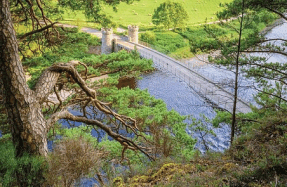

In 1558, a young princess was reading the Bible under an oak tree in Hatfield Park when she heard she had become queen. “This is the Lord’s doing,” she rejoiced, quoting the psalm she had just reached.
“It is marvellous in our eyes.”
Elizabeth, daughter of Henry VIII, had grown up at Hatfield Palace, as it was then, happily reciting Latin and Greek declensions in the schoolroom, before Mary I, her Catholic half-sister, acceded the throne and imprisoned her on the estate, fearing her enemies would put Elizabeth, a Protestant, in her place.
Hatfield Palace in Hertfordshire had been built in 1485 for John Morton, Bishop of Ely and Henry VII’s minister, and then seized by Henry VIII, along with other church properties. Now, it belonged to Elizabeth. On hearing of her






